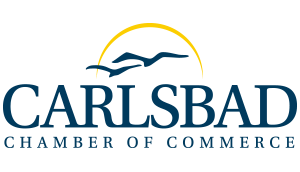You can improve your golf game by addressing the following four common problems:
• Coming over the top, how many golfers do you know that top the ball?
This problem is often believed to be caused by not keeping the head down during the swing. What causes the head to lift prematurely? It may be an anxious golfer eager to see his shot or it may be something else.
Adductors muscles in the legs are activated during the transition of weight transfer from the top of the backswing to the start of the downswing. These help pull the hips through while the upper body follows behind.
Tight adductors will cause the golfer to be unable to pull his hips through and force the swing around prematurely, which results in topping the ball.
• The slice, one of the most common problems in golf is the slice.
Golf pros often point out that the back foot should be perpendicular to the plane line of the ball. An open stance causes the club head to stay open on contact, leading to the shot going right of the target.
Sometimes golfers aren't able to comfortably keep their foot in the correct orientation due to tight external hip rotators.
• Narrow swing arc, almost all golfers want more power and distance in their drives.
They mistakenly believe that swinging harder at the ball will achieve this. The actual power of a golf swing comes from the physics of it. This involves lever arms and swing arcs.
A golfer with a wide swing arc doesn't have to swing hard because of the longer lever involved. A nice smooth stroke with the proper arc width will actually cause the club head to move at a higher velocity than a muscled swing with less accuracy.
Narrow swing arcs are most commonly caused by shoulder tightness leading to the forward elbow bending, which narrows the swing arc.
The four muscles of the rotator cuff, Supraspinatus, Infraspinatus, Teres Minor and Subscapularis, must all be working in conjunction with each other for a wide swing arc to be possible.
• Inconsistent spine angle, the angle of the spine at address should remain constant throughout the stroke.
Lack of flexibility will cause this to be impossible. The spine itself must be flexible to allow the rotation, extension and flexion necessary to maintain the spine angle.
Even the muscles of the lower leg must be flexible in order to allow the spine angle to remain constant.
For more information, call (760) 434-9006 or visit www.carlsbadwellness.com.
• Coming over the top, how many golfers do you know that top the ball?
This problem is often believed to be caused by not keeping the head down during the swing. What causes the head to lift prematurely? It may be an anxious golfer eager to see his shot or it may be something else.
Adductors muscles in the legs are activated during the transition of weight transfer from the top of the backswing to the start of the downswing. These help pull the hips through while the upper body follows behind.
Tight adductors will cause the golfer to be unable to pull his hips through and force the swing around prematurely, which results in topping the ball.
• The slice, one of the most common problems in golf is the slice.
Golf pros often point out that the back foot should be perpendicular to the plane line of the ball. An open stance causes the club head to stay open on contact, leading to the shot going right of the target.
Sometimes golfers aren't able to comfortably keep their foot in the correct orientation due to tight external hip rotators.
• Narrow swing arc, almost all golfers want more power and distance in their drives.
They mistakenly believe that swinging harder at the ball will achieve this. The actual power of a golf swing comes from the physics of it. This involves lever arms and swing arcs.
A golfer with a wide swing arc doesn't have to swing hard because of the longer lever involved. A nice smooth stroke with the proper arc width will actually cause the club head to move at a higher velocity than a muscled swing with less accuracy.
Narrow swing arcs are most commonly caused by shoulder tightness leading to the forward elbow bending, which narrows the swing arc.
The four muscles of the rotator cuff, Supraspinatus, Infraspinatus, Teres Minor and Subscapularis, must all be working in conjunction with each other for a wide swing arc to be possible.
• Inconsistent spine angle, the angle of the spine at address should remain constant throughout the stroke.
Lack of flexibility will cause this to be impossible. The spine itself must be flexible to allow the rotation, extension and flexion necessary to maintain the spine angle.
Even the muscles of the lower leg must be flexible in order to allow the spine angle to remain constant.
For more information, call (760) 434-9006 or visit www.carlsbadwellness.com.
